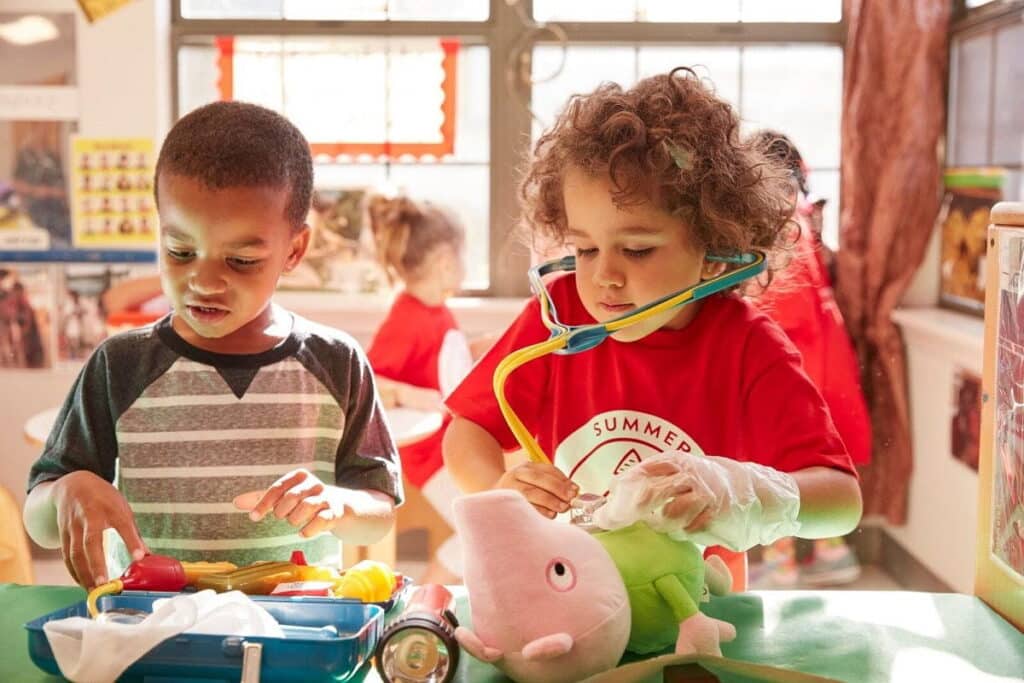Although it’s not commonly practiced in public school systems, the Montessori method is a very popular form of education among private and charter schools across the United States. It’s an educational paradigm that encourages students to drive their own learning, but it’s the Montessori view on pretend play that makes it controversial.
Montessori educators discourage children from engaging in fantasy play, eschewing it instead for play based in reality. It recognizes, however, that imagination is a critical part of a child’s ability to learn and grow as well as being a foundation for human creativity.
Many parents and people cringe when they’re first exposed to the Montessori philosophy because fantasy and childhood are so intertwined in our culture. However, this reaction usually changes when the actual philosophy is explained by a passionate practitioner. Keep reading for a better understanding of this interesting teaching paradigm.
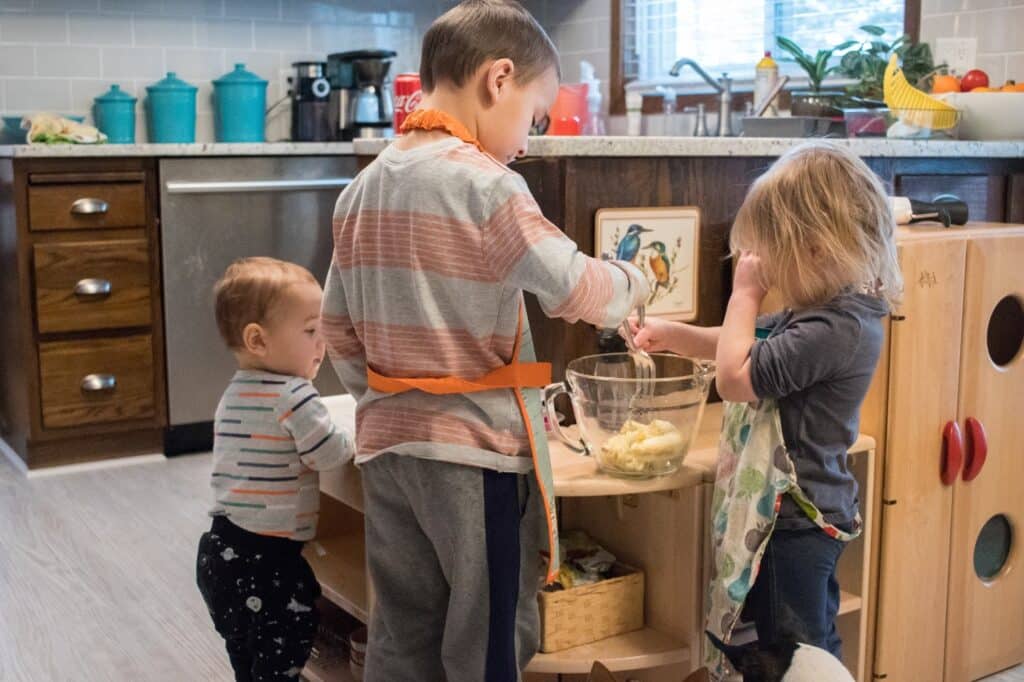
What is the Montessori Approach to Pretend Play?
Many people think Montessori education discourages pretend play and imagination, but this is somewhat of a misunderstanding. Montessori practitioners discourage the introduction of fantasy (think unicorns or pretend kitchen play sets) with very young children because of their inability to distinguish fantasy from reality.
Younger children are often more fascinated with what they discover in the real world, so a Montessori school environment will give a toddler a real, appropriately sized broom and dustpan to teach them how to clean up a mess, rather than a pretend set.
Another great example is having a functional Montessori kitchen instead of a pretend play kitchen.
These practices change by developmental plane, a brief summary of which is listed in the table below.
| Developmental Plane | Brief Description |
| 1st (Toddler-6 yrs.) | Child’s mind is absorbent, ready to learn, strong desire to be physically independent |
| 2nd (6 yrs.-12 yrs.) | Child is moving towards mental independence, ready to start understanding more abstract concepts |
| 3rd (12 yrs.-18 yrs.) | Adolescent begins to understand their place in the world and to take more control over their life |
| 4th (18 yrs.-24 yrs.) | Adult ready to move on and take charge of their own life, developed a life-long love for learning |
In each of these planes, the child is encouraged to direct their own discovery of the world and their place in it, and to develop real-world skills and knowledge. As the child gets older and is better able to distinguish reality from fantasy, toys, books, and games that land more solidly in the fantasy camp can be made available.
Montessorians (as practitioners call themselves) do not discourage pretend play. They understand that pretend play is a crucial component of developing a child’s imagination, the center of their creativity. However, pretend play should involve things that are grounded in reality.
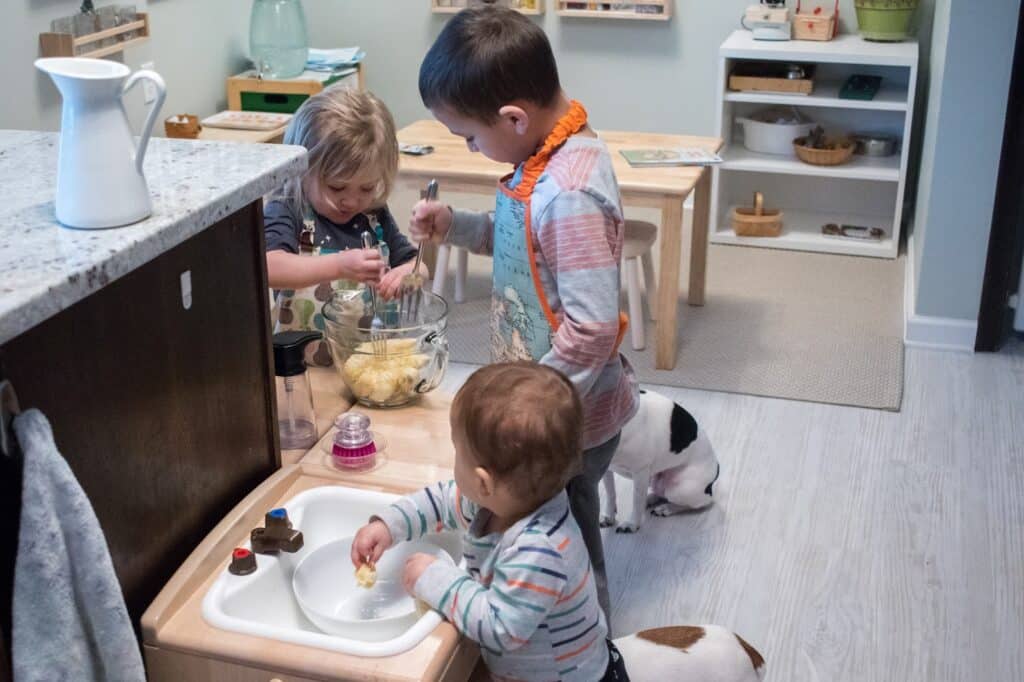
A Brief History of the Montessori Educational Paradigm
Before getting too deep into the Montessori take on fantasy, imagination, and creativity in children, it will be helpful to get brief overview of the history behind this educational method. It was started in Italy at the beginning of the 20th century by a physician named Maria Montessori, who happened to be Italy’s first female doctor.
Dr. Montessori started a children’s school where she learned that teaching children according to their individual stage of development and allowing them to direct their own learning by exploring what fascinated them worked better than traditional methods. She published a book about her experiences and the international movement was born.
The first Montessori experiments in the U.S. were largely unsuccessful because of significant backlash from educators in the United States against Dr. Montessori’s teaching methods, and from 1920 to around 1958, there were no Montessori-based schools to be found.
However, this all changed when an educator named Dr. Nancy McCormick Rambusch opened the first Whitby school in the U.S., which used Montessori theories to educate children.
Today, there are dozens of Montessori schools around the world, and the theories and practices are largely the same as they were in its beginning days; child-centric teaching model where the teacher focuses on getting each child to develop a self-driven, disciplined approach to learning.
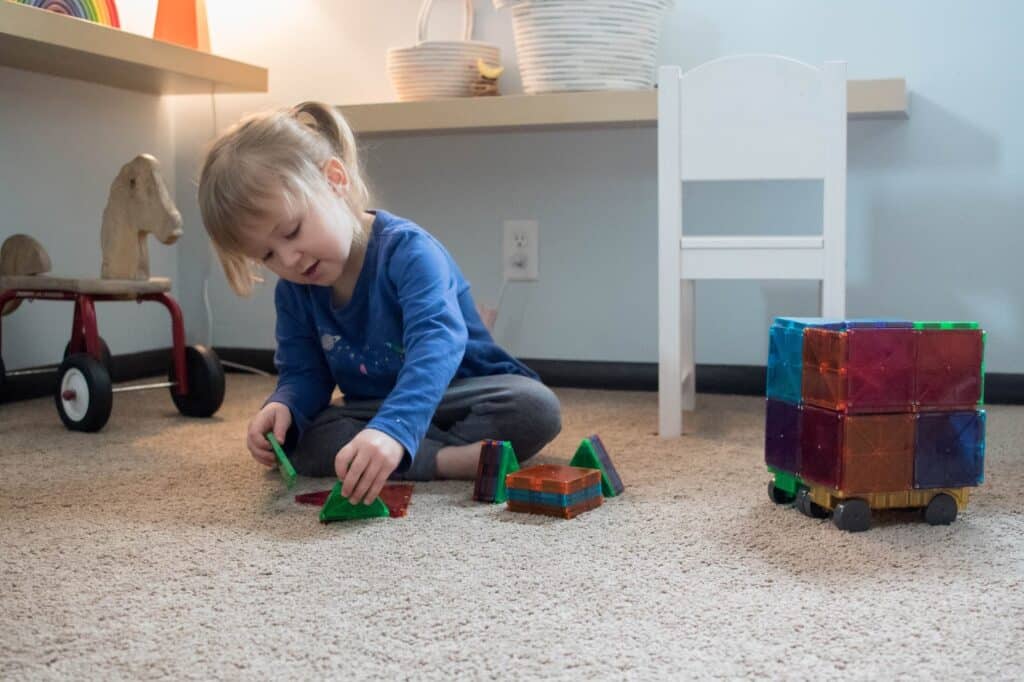
What is the Montessori Method?
The Montessori method has evolved since it was first introduced by Dr. Montessori, but in many ways, it remains grounded in her insights and methods. The main goal of the Montessori educational method is to help children develop a life-long love for learning.
Montessori holds that children learn best when they’re self-motivated to learn, rather than having subjects given to them to study. Anyone who’s tried to get a kid interested in learning rote math skills or memorize dry historical dates can sympathize with this idea, but Montessori seeks to provide children the freedom to pursue what they want to learn.
A Montessori education is also designed to help each child reach their full potential by recognizing them as an individual, and helping them develop their own unique skills. Instead of a more teacher-centered approach to the classroom, Montessori classrooms are child-centric in that they encourage each child to learn, develop, and grow at their own pace.
The Montessori method is not completely determined by the child, however. Teachers act as guides for the kids, helping to focus their attention and find out what truly inspires them. Formal lessons start when a child is about 6 years old, and they involve introducing new, abstract concepts in a way that helps kids see how interconnected everything in the world is.
Multi-Age Classroom Groupings
Another interesting component of most Montessori programs is that older children and younger children are often grouped together in the same classroom. The reason for this is two-fold; younger children learn better when they’re observing and imitating older children, and older children retain information better when they’re teaching it to younger kids.
Pros and Cons of Montessori
As with any controversial teaching method, there are a number of pros and cons that have been identified in connection with the Montessori method. These are described below:
Pros:
- Children are able to pursue what’s interesting to them
- Children are given uninterrupted blocks of time to develop their ability to concentrate
- Things are grounded in realism so kids are constantly learning about the world around them
- Teachers typically have smaller classroom sizes so kids can get more one-on-one time
Cons:
- Montessori-based schools are typically private and can often be expensive
- Kids may not get a lot of education on more traditional, universally taught subjects like math or grammar
- A lack of structured social interaction

The Montessori View on Fantasy
For very young children, there isn’t an inborn ability to distinguish fantasy from reality. For this reason, Montessorians generally discourage fantasy stories, shows, and play. The following things are examples of what might be discouraged for young children in the first developmental stage:
- Stories with talking animals
- Movies or TV shows with superheroes
- Play kitchen sets with wooden food
- Toys that move or act on their own
- Fantasy-based stuffed animals (like unicorns)
The Montessori method fully acknowledges that young children’s imaginations are extraordinarily active, and they’re not trying to suppress it at all. On the contrary, the real world is so brand new to young children that it’s just as fantastic as many fictional stories.
Fantasy is less discouraged as children age. In the Montessori educational model, when children are in the second developmental plane they’re much more capable of distinguishing reality from fantasy, so fictional books aren’t necessarily discouraged. However, practitioners do believe in presenting children plenty of options for real-world learning and exploration as well.
As children get older, Montessori advocated the use of stories to illustrate the real world, although these stories are grounded in reality. These stories are called Montessori’s Five Great Lessons, and they’ll be covered in more detail later.

Learning Through All the Senses
Another crucial component of the Montessori model is encouraging learning and exploration of the real-world through all the senses, not just through sight and sound (which are traditionally the most catered-to senses in other educational models). Children are encouraged to explore nature and learn in the classroom through touch, taste, and smell as well.
Therefore, some of the best toys for parents wanting to use the Montessori method are those made from natural materials that encourage kids to manipulate them by hand and engage multiple senses.
Montessori classrooms are set up to encourage frequent movement and exploration as well. At first, they may seem chaotic, but eventually an observer realizes that there is an order to the chaos as children move freely about the room to explore and concentrate on what fascinates them.
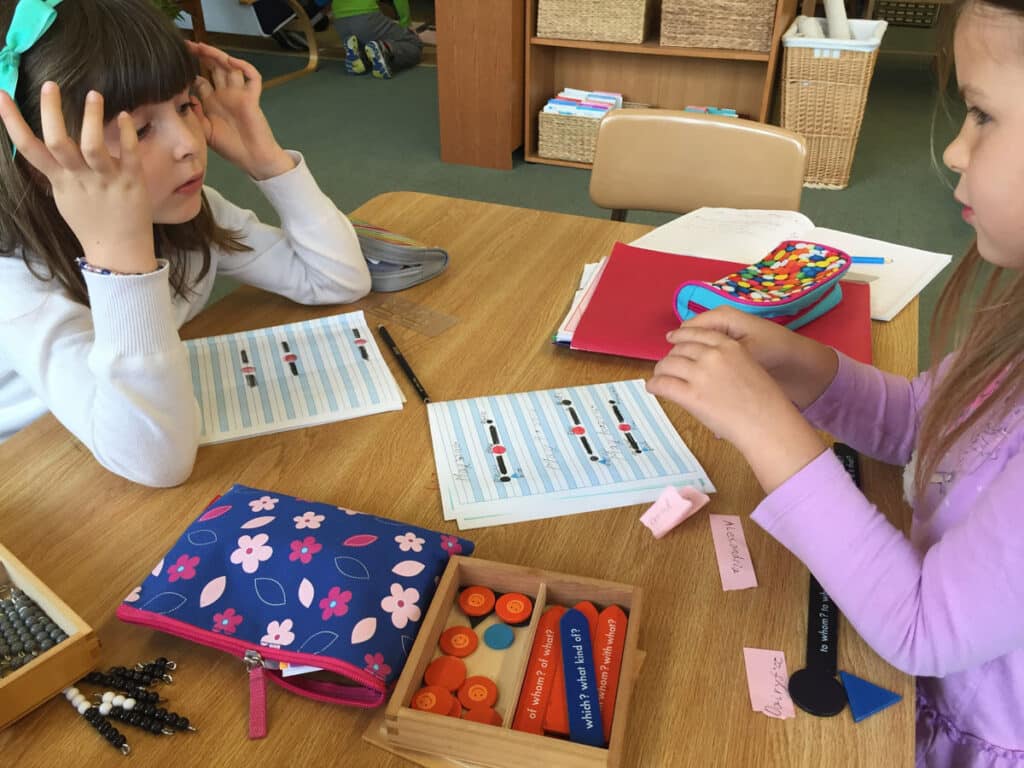
Montessori and a Child’s Imagination
The Montessori model has built into it a child’s imagination in a structured way. Montessori recognized that children interact with the world and act out what they see adults doing through the use of their imagination, and that a healthy imagination is the seat of creativity and intelligence.
Therefore, Montessori-based educational programs, and Montessori parenting techniques, encourage the use of a child’s imagination in reality-based play and exploration. At very young ages, children’s play is very imaginative, as they carry out pretend scenarios and interactions that they see the adults in their lives do.
Dr. Montessori’s Five Great Lessons
In the second plane of development, Dr. Montessori realized that children were ready to start understanding larger, but still very real, concepts about the world around them. To that end, she developed her “Five Great Lessons” to introduce children to the concepts of the world and the cosmos. These five lessons are:
| Lesson Number | Name | Description |
| 1st Great Lesson | Coming of the Earth and Universe | Describes the formation of the Earth and the mysteries of the cosmos |
| 2nd Great Lesson | Coming of Life | Introduction to biology and the study of life |
| 3rd Great Lesson | Humans Come to Earth | Study of human evolution and history |
| 4th Great Lesson | Communication and Writing | Introduction to history, mythology, and communication |
| 5th Great Lesson | Numbers | Introduction to math and numbers |
Because of the huge, abstract concepts each of these lessons introduces, an engaged and active imagination is essential as students begin to grapple with these questions and theories. It is especially important because these lessons all attempt to illustrate how everything on Earth and in the universe is ultimately interconnected.
Imagination and Its Role in Learning
At its core, the Montessori model is intended to help children develop a life-long love of learning. Too often, a more traditional public-school setting has kids memorize long lists of dates, facts, and data for tests, only for them to be forgotten as soon as the test on them is over. Montessori educations are designed to help kids learn about what they love.
Because of the strong link between imagination and intelligence, there is no reason why Montessori schools would discourage imagination. Indeed, Montessori advocates contend that children develop their imagination best through hands-on experiences with things found in the real world.
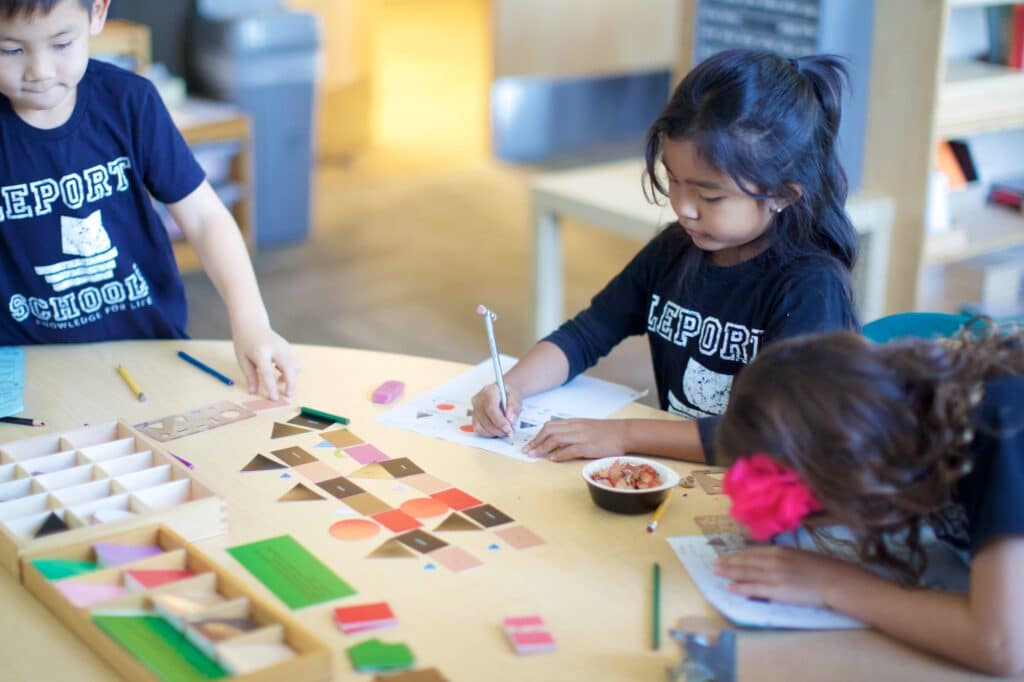
sing Imagination to Understand the World
Montessori models emphasize the use of imagination to help children understand the world around them, but imagination that’s grounded in reality. Consider trying to explain how a plane works to a young child, who might be able to see a plane in the sky but doesn’t understand the science.
A Montessori educator might help a child understand the concept through things that are a little simpler to understand, like using a paper airplane to illustrate the concept of thrust or lift. Helping a child take an image and apply it to other concepts helps them to develop concrete understandings of abstract or complex problems or parts of the world.
Creativity’s Role in the Montessori Paradigm
Closely related to imagination is a child’s ability to be creative. Imagination allows a child to come up with alternate ways to understand the world around them, and to visualize new ways to solve problems, so it logically follows that an imaginative child will be creative as well.
When kids enter the second developmental plane, their imagination is prepared to help them understand abstract or advanced concepts that they couldn’t experience as a younger child. Since children at the age of 6 are better prepared to understand these advanced concepts, largely due to their well-developed imagination, they’re ready for the Montessori great lessons.
These great lessons have already been described, but it’s useful to explain the role that creativity and imagination have in the Montessori view as related to education. A healthy sense of creativity allows children to apply real-world experiences to abstract concepts more effectively than if they’re confused by years of exposure to fantasy.
In the words of Dr. Montessori, in order to light a fire of excitement for learning, the instruction must touch their imagination. Since a Montessori education is intended to create a life-long love of learning in children, it’s necessary to get kids excited to learn. This is done through imagination and creativity in the Montessori model.

Creativity and Self-Directed Learning
Since kids are largely responsible for choosing the direction of their own learning (within wide boundaries set by their teacher), they must be in touch with their creative sides. This creativity allows them to think about things in new ways, come up with new approaches to problems, and to think outside the box.
Creativity helps children imagine what could possibly be so they actually become interested in what they’re learning. A Montessorian would say that public schools or other schools that teach in a more traditional way stifle a child’s creativity because they keep them all in the same small box of instruction. There isn’t any room for a child to explore things that interest them.
Montessori-Approved Toys, Games, and Books
So, if you can’t buy plush toy monsters or get fantasy books for your kids, what sorts of toys and games are approved by the Montessori method? There are plenty of buying guides online, but a general set of guidelines are:
- Based in reality: Books for young kids should be about situations that exist in the real world to promote a healthy ability to separate fantasy from reality
- Made from natural materials: Montessori toys should have a multitude of different textures from real materials, like wood, metal, and natural fabrics, not plastic
- Functional: Montessori toys should have a point to them, a concrete thing about the world that they teach young children.
- Toys are simple: they don’t have a lot of complicated pieces. A puzzle with three shapes helps a child learn through small bits of easy-to-understand information
- Limited choices: toys that are overly complex, or a simple overabundance of choices for toys, leads to kids feeling overwhelmed and frustrated.
Ever wonder why kids will usually just play with the box a new toy came in? It may be frustrating for the parents who spent all that money on the new toy, but when viewed through a Montessori lens, it’s perfectly understandable. Kids are drawn to simple toys that they can learn about the world with; like a cardboard box.
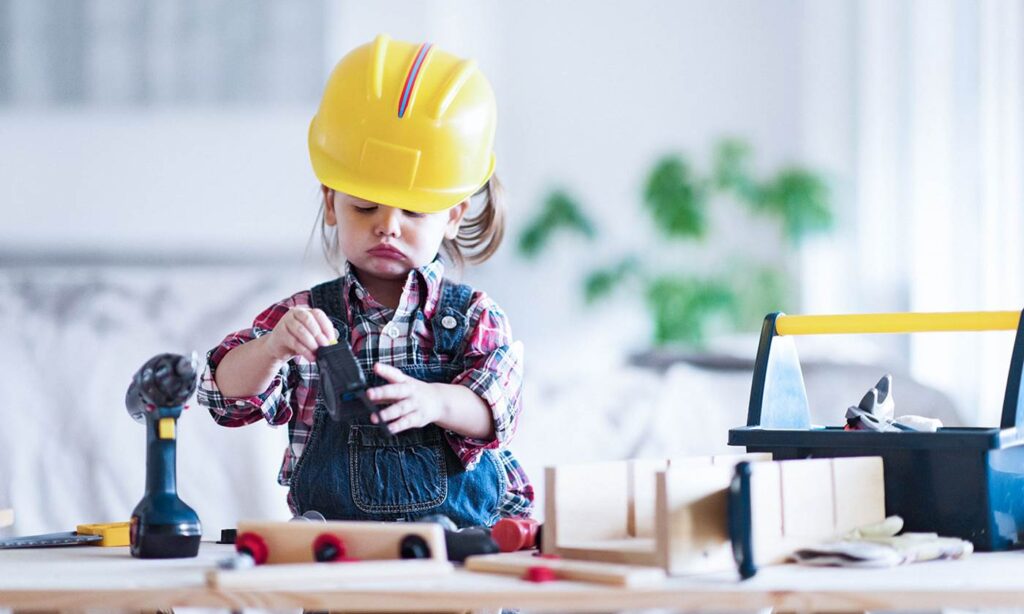
Final Thoughts
A Montessori education isn’t necessarily designed for every parent to like, but most kids who are brought up with at least some aspects of the Montessori method benefit from it. While it’s still controversial even to this day, a multitude of public schools have at least tried to incorporate it into their curriculum.
The Montessori method discourages exposure to fantasy for younger kids, and encourages parents and teachers to make sure that everything in the educational process is solidly grounded in reality. However, it recognizes and embraces the fact that creativity, imagination, and intelligence are all closely integrated and that all are necessary for a good education.

